Stomach ulcers are open sores present in the stomach wall. It develops when the acid in your stomach starts damaging your stomach lining. Damage to the stomach wall causes open sores, which might cause pain and bleeding1.
Stomach ulcers are common among people and are manageable. Still, you should take stomach ulcers seriously and get timely medical help. They are also called gastric ulcers. Ulcers can also develop around the duodenum wall, the first part of the small intestine. These ulcers are known as duodenal ulcers. Stomach ulcers require medical care and treatment, even if they don’t cause symptoms. If not treated in time, stomach ulcers can get worse. Therefore, medical help is necessary1.
There are also some herbal remedies that you can use to manage the symptoms of stomach ulcers at home. The benefits of these herbs and the method to use them are mentioned below.
Did you know?
The common causes of stomach ulcers are mentioned below.
Some rare causes of stomach ulcers are:
Some stomach ulcers may not cause any symptoms. These stomach ulcers are also called ‘silent ulcers’. Some common symptoms of stomach ulcers are:
The remedies mentioned below can help you take care of your stomach and manage the symptoms of stomach ulcers.
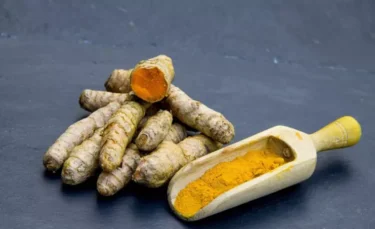
Turmeric is a potent anti-inflammatory and antioxidant remedy that could be extensively used as a medicinal herb. It is found throughout India. Because of its antioxidant activity, it may help reduce ulceration. It might also reduce the inflammation and swelling in the stomach lining3. You can put turmeric in your foods and dishes. You can also add turmeric powder to a glass of warm water. Drinking this water will help you manage stomach ulcers.
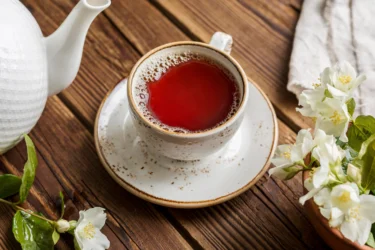
Tea or Camellia sinensis is one of the most popular nonalcoholic beverages worldwide. It might be helpful for stomach ulcers because of its rich antioxidant benefits. The antioxidant activity of tea might be good for managing ulcers. It could also reduce swelling in the stomach and increase the production of mucin. Mucin is responsible for forming the protective barrier of the stomach wall3. You can prepare black tea at home and get all its antioxidant benefits.

Ginger is widely used as a therapeutic herb in many parts of the world. Ginger might be an effective remedy for many gastric ailments like indigestion and gas. It is good for reducing stomach distress. It may also be effective for stomach ulcers because of its antioxidant activity. Ginger could be used as an ingredient in food and dishes. You can put ginger in your soups, salads, and other side dishes.

Liquorice is the root of the plant scientifically known as Glycyrrhiza glabra. It is often used in the management of gastric ulcers in Europe. Liquorice may help by enhancing mucin production in the stomach, increasing the vitality of the cells lining the stomach, and promoting ulcer healing3. Liquorice root can be used to make tea. Heat some water in a saucepan or kettle till it boils. You can put some liquorice root powder and a little honey in the boiling water for taste. Let the tea simmer on low flame. Strain it in a cup and enjoy.
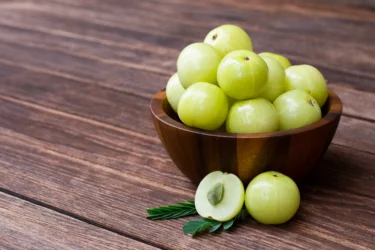
Indian gooseberry or Amla is widely consumed as a fruit and food product. This fruit is often used as a medicinal ingredient in the Ayurvedic and Siddha systems of medicine. It possesses antioxidant and anti-inflammatory properties, which might help manage ulcers. Intake of amla in the form of fruit or juice might help you manage gastric ulcers3.

Kutki or Picrorhiza kurroa is a medicinal herb grown in tropical regions of the country. This herb is known for its antioxidant benefits, because of which it might act as an effective stomach protective agent. You can take kutki powder with a glass of warm water. You can also add some honey for taste3.
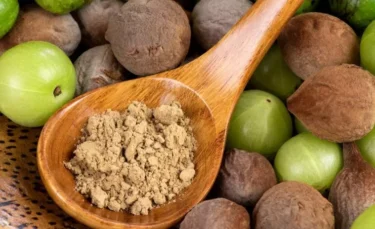
Harad is a medicinal herb known as Myrobalan in English. It offers many health benefits. It may also be helpfulfor many stomach ailments like gastritis (inflammation and swelling of the stomach) and stomach ulcers. It might help form a protective barrier for the stomach lining and prevent ulcer formation. You can mix some harad powder in warm water. Intake of this mixture might help you relieve stomach ulcers4.

Aloe vera is used as a herbal medicine for many health conditions. For example, Aloe vera has wound healing and anti-inflammatory properties, because of which it could be an effective remedy for stomach ulcers. Consuming pure aloe vera gel regularly might help you reduce the swelling in the stomach lining and promote the ulcers’ healing7. You can also try aloe vera juice to get the benefits.
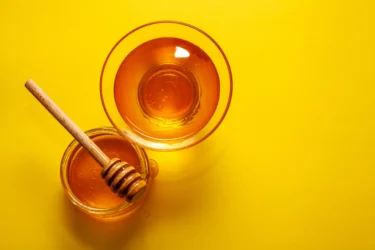
Honey is one of the most popular medicinal ingredients used in the Ayurvedic system of medicine. It is good for many stomach conditions such as gastritis and peptic ulcers. It is mainly recommended to manage stomach ulcers. Honey has healing powers that might be beneficial in dealing with stomach ulcers5. You can eat a spoonful of honey directly. You can also take honey with a glass of warm water to relieve stomach ulcers.
Though there are studies that show the benefits of the given herbs and home remedies in managing stomach ulcers, these are insufficient. There is a need for large-scale human studies to establish the true extent of the benefits of these home remedies on human health. Thus, these should only be taken with caution and never as a substitute for medical treatment.
For most of the patients, true healing of stomach ulcers goes beyond short-term remedies; it entails a steadfast commitment to long-term treatment, embracing dietary adjustments, mastering stress management, and nurturing a sound sleep regimen.
Dr. Arpit Verma, MBBS, MD (Pharmacology)
Also Read: Food for Piles: Best Food Options and Foods to Avoid
You need to contact your doctorand get medical help if you:
You must not rely on home remedies alone for dealing with stomach ulcers and should consult a qualified doctor for advice if the symptoms do not improve with home remedies.
Also Read: Instant Home Remedies for Digestive Problems
Stomach ulcers are nothing but sores present in the stomach wall. These open sores result from damage due to acids present in the stomach. Common reasons for stomach ulcers are over usage of certain drugs and getting infected by Helicobacter pylori bacteria. Stomach ulcers often lead to burning pain in the abdomen. There are various herbal remedies for stomach ulcers that might help you manage the symptoms and prevent the ulcer from worsening. Examples are turmeric, myrobalan, ginger, kutki, and liquorice.
If you or somebody around has any symptoms of stomach ulcers, take care and reach out to your doctor. Getting an early diagnosis and advice can help you prevent the condition from worsening.
Also Read: Acidity Problems? 21 Home Remedies That Can Help
Home remedies for gastric ulcers are herbs like turmeric, kutki, myrobalan, aloe vera, ginger, harad, liquorice, tea and Indian gooseberry. Honey may also be effective in relieving gastric ulcers. You need to consult with a doctor before proceeding with any remedy for stomach ulcers. Gastric ulcers need to be taken seriously and require proper medical care.
Yes, honey offers many health benefits that might help to deal with stomach ulcers. Honey possesses wound healing properties. Honey might help promote the healing of stomach ulcers.
Peptic ulcers are lesions in the stomach and intestinal lining. The protective mucus layer lining the stomach is damaged, allowing the stomach acids to damage the stomach walls directly. This causes the formation of peptic ulcers. Stomach ulcers are one type of peptic ulcer.
Yes, if stomach ulcers are left untreated for an extended time, they can lead to severe complications like internal bleeding, obstruction in the flow of food from the stomach to the intestine, perforation or hole in the stomach, and stomach cancer.
Disclaimer: The information provided here is for educational/awareness purposes only and is not intended to be a substitute for medical treatment by a healthcare professional and should not be relied upon to diagnose or treat any medical condition. The reader should consult a registered medical practitioner to determine the appropriateness of the information and before consuming any medication. PharmEasy does not provide any guarantee or warranty (express or implied) regarding the accuracy, adequacy, completeness, legality, reliability or usefulness of the information; and disclaims any liability arising thereof.
Gout can make life difficult for people who want to live an active and happier life. Gout is a type of arthritis characterised by joint pain and swelling. It is due to the accumulation of uric acid crystals in the joints. Gout can occur in joints, tendon sheaths (membranes surrounding tendons; tendons are tissues that connect bones and muscles), kidneys, and bursae (cushion-like sacs between bones and connected soft tissues). Many people get the first flare of gout on their big toes. Gout is a common phenomenon, especially in middle age. Men are more prone to gout than women. Women develop gout usually after menopause. Gout is a rare occurrence in the younger population. The gout pain often fares up at night and sometimes becomes painful enough to wake people up1. Gout has no cure, but it is possible to treat and manage the symptoms with self-management strategies2.
It is essential to relieve gout pain and swelling for people to live a comfortable life. These home remedies might help you with that.
Too much uric acid or urate in the body forms crystals. These crystals get accumulated in the joints, causing symptoms like swelling, stiffness, and pain. The factors listed below may increase your chances of developing gout:
Daily intake of turmeric and aloevera which contains curcumin as active ingredients have high anti-inflammatory properties. Reasearch shows that daily intake of aloevera and turmeric orally reduces the pain in long-term.
Dr. M.G. Kartheeka, MBBS, MD(Pediatrics)
Gout can make life difficult for people. If you are suffering from gout, you might experience symptoms like:
Gout is a painful condition that can make life difficult. It affects several aspects of everyday life, including leisure and work activities. However, you can use these home remedies to manage gout symptoms and lead a comfortable life.
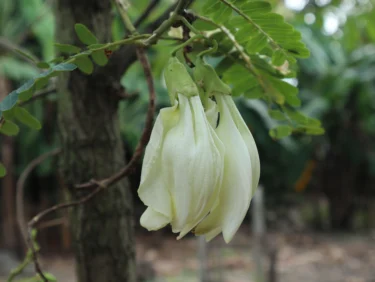
Agastya is a plant known as West Indian pea or august flower in English. It has anti-inflammatory (reduces inflammation) and analgesic (pain-relieving) properties. You can use the root and bark of the Agastya plant to make a paste. You can apply this paste externally to relieve the pain and swelling associated with gout4.

Castor leaves, or Arand is a herbal remedy effective in many health conditions. You can also use Castor leaves to relieve swelling and pain in the joints. To use castor leaves, make a paste using mature leaves. To this paste, add a little amount of crystal salt. Warm this mixture. Apply this mixture (lukewarm) over the joints. It can help reduce the pain and swelling of the joints4.

Ashwagandha, or Indian ginseng, is a potent herb with many health benefits. Ashwagandha intake can help you increase your energy and strength. The benefits of ashwagandha might help you manage gout. To use asvagandha, you can mix asvagandha powder with kapikacchu and black sesame seeds. Mix it thoroughly and take this mixture with a glass of milk to manage problems such as arthritis4.
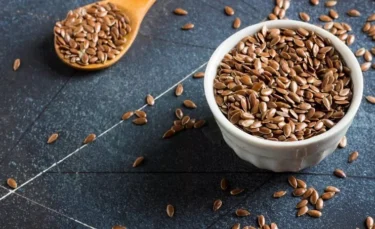
Alsi or linseed seeds have many medicinal benefits. Alsi seeds possess pain-relieving properties when applied topically to the skin. Soak some alsi seeds in buttermilk through the night. Use these soaked seeds to make a fine paste the following day. You can apply this paste to the affected joints when required. Applying this paste can help you relieve joint pain4.
Gout may not just affect the joints of the foot but may also affect other joints of the body. It may seem like a very painful or incapacitating condition, but is very much treatable when diagnosed early and managed appropriately.
Dr. Ashish Bajaj, M.B.B.S., M.D. in Clinical Pharmacology and Toxicology

Following a more nutritious diet plan can help you live a better life. Eating foods rich in purines may trigger a gout flare. You can avoid foods such as organ meat, red meat, and seafood. You also need to avoid alcohol intake, especially hard liquor and beer2.
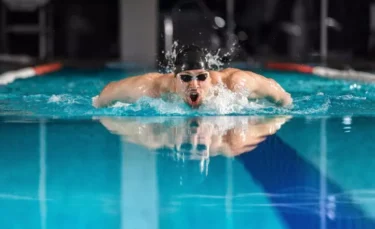
To manage arthritis, it is recommended that adults engage in at least 150 minutes of physical activity every week. Every minute of physical activity is valuable. The exercises recommended are moderate to low impact, for example, walking, biking, and swimming. Doing regular physical exercise will also help you avoid the risk of other health conditions like diabetes, stroke, and heart diseases2.
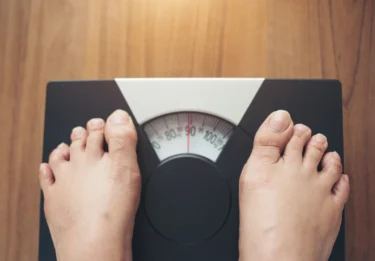
If you are overweight or obese, losing weight will help reduce the pressure on your joints, especially hip and knee joints. You can try maintaining a healthy body weight to improve your symptoms. Healthy body weight will relieve pain, improve overall functioning, and lower the disease progression2.

Getting joint injury while you have gout will worsen your condition. Try engaging in activities that do not put much pressure on the joints. Engaging in easier activities like cycling, walking, and swimming can help you prevent the worsening of your symptoms and prevent further damage. These activities have a low impact on your joints and lower risk2.
Also Read: Feel Like Throwing Up? What You Should and Shouldn’t Do According to Doctors
You can contact your healthcare provider or doctor if you experience severe kind of joint pain and your joints feel warm and swollen3.
Also Read: Home Remedies For Gas
Gout is a type of arthritis caused by a buildup of crystals of uric acid in the joints. It is characterised by swelling and pain in joints. It can severely affect people’s day-to-day activities. Work as well as leisure activities of people get affected. Although there is a lack of specific treatment for gout, you can manage the symptoms and lead a comfortable life with some lifestyle and diet changes.
You can also use herbs like Asvagandha, Alsi, Castor, and Agastya to relieve gout symptoms at home. Gout is a severe condition of the joints that requires proper medical diagnosis and intervention. You need to get in touch with your healthcare provider if you experience severe pain in your joints accompanied by swelling and heat.
Also Read: Doctor-Approved Home Remedies For Vertigo
You can use natural remedies like Asvagandha powder, Alsi seeds, Castor leaves, and the bark of Agastya to manage gout symptoms at home. You can use these herbs to relieve the symptoms of gout4. You can also manage the gout symptoms at home by following a healthy diet, exercising regularly, and maintaining a healthy body weight. Also, protecting the affected area from injuries is important. Getting injured when you have gout will worsen the condition and prevent the healing2.
With some lifestyle and diet changes, you can prevent gout. Lifestyle changes include drinking plenty of water and exercising regularly to maintain a healthy body weight. You can also make the following diet changes to avoid gout. You must avoid: Organ meat and red meat
Alcohol
Shellfish
Foods and drinks with high fructose
Protein sourced from animal origins3
Yes, obesity is one of the significant risk factors for gout. Being overweight or obese puts excessive pressure on your joints1.
If you are experiencing severe joint pain, and think you might have gout, reach out to your healthcare provider immediately. Your doctor will perform a physical examination. Besides a physical examination, your doctor can also ask you to get diagnostic tests like X-rays and laboratory tests done. Gout is mainly diagnosed during a gout flare, during which the joint is painful, swollen, and hot to touch2.
Gout has other complications as well. Gout can turn into its long-term form, chronic gout, where people suffer from frequent attacks. Many people who suffer from chronic gout can also develop tiny white lumps beneath the skin surface. These bumps are called tophi, which usually appear on fingers, ears, and elbows. Gout is the result of a high amount of uric acid crystals in the blood. These crystals can get accumulated in the kidneys and lead to kidney stones.
Yes, you can control the symptoms with proper diet and lifestyle changes. Gout is a controllable form of arthritis1. You also need to contact your healthcare provider and get the necessary treatment. It will help you prevent the condition from worsening.
1. NIAMS. Gout Symptoms, Causes & Diet Recommendations [Internet]. [cited 2022 May 30]. Available from: https://www.niams.nih.gov/health-topics/gout
2. Cleveland Clinic. Gout: Causes, Symptoms, Treatment & Prevention [Internet]. [cited 2022 May 30]. Available from: https://my.clevelandclinic.org/health/diseases/4755-gout
3. Ayush Division. Ayurveda offering Herbal healing. Available from: https://esic.gov.in/attachments/publicationfile/7d11b02e5abb4717d53b4ce05efabd21.pdf
4. NHS. Gout [Internet]. [cited 2022 May 30]. Available from: https://www.nhs.uk/conditions/gout/
Disclaimer: The information provided here is for educational/awareness purposes only and is not intended to be a substitute for medical treatment by a healthcare professional and should not be relied upon to diagnose or treat any medical condition. The reader should consult a registered medical practitioner to determine the appropriateness of the information and before consuming any medication. PharmEasy does not provide any guarantee or warranty (express or implied) regarding the accuracy, adequacy, completeness, legality, reliability or usefulness of the information; and disclaims any liability arising thereof.
Links and product recommendations in the information provided here are advertisements of third-party products available on the website. PharmEasy does not make any representation on the accuracy or suitability of such products/services. Advertisements do not influence the editorial decisions or content. The information in this blog is subject to change without notice. The authors and administrators reserve the right to modify, add, or remove content without notification. It is your responsibility to review this disclaimer regularly for any changes.
If you or someone around you is suffering from arthritis, you are already familiar with the repercussions it can have on the daily lives of people.
The term arthritis means ”joint inflammation”. It refers to the group of conditions that affect the joints. It is a common condition that causes swelling and pain in the joints. A joint is nothing but the junction where two bones connect.
Arthritis can occur in men, women, and children of all age groups. Arthritis can be of different kinds; while it primarily affects joints, it can also occur in organs like your heart, eyes, and skin. The symptoms can range from mild to severe1,2.
An early diagnosis can help you start the treatment early, which will help you prevent the condition from worsening or causing permanent joint damage. In addition, there are plenty of home remedies that you can use to manage your symptoms and live a less painful life. Some of the remedies are discussed below.
There are different types of arthritis, and for most of them, the causes are not fully known. You might develop arthritis if you
The symptoms of arthritis vary with the type of arthritis. However, there are some symptoms come to any arthritis. Common symptoms of arthritis are:
You can use these home remedies to manage and relieve the symptoms of arthritis. Some of the herbs mentioned below can be used as homemade remedies for arthritis.

Turmeric or haldi is a household remedy used for many health conditions in the country. It is an effective remedy to reduce the swelling of the joints due to its potent anti-inflammatory activity. Curcumin is the active component responsible for its anti-inflammatory activity. Turmeric is also an effective pain-relieving remedy. It is one of the most recommended remedies to relieve rheumatoid arthritis3. You can simply add a pinch of turmeric in your dishes. For example, it can be added to soups, vegetables, lentils, and other food preparations. Typically, it is used in most dishes in almost every Indian household.
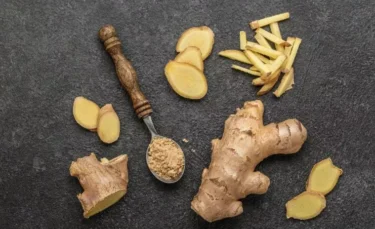
Ginger is an effective ayurvedic medicine used for thousands of years for many ailments. It is also frequently used in other traditional systems of medicine. It helps by reducing swelling and providing pain relief. You can use ginger in various soups, salads, and sauces3. Ginger has active compounds like gingerol and shogaol, responsible for the anti-inflammatory benefits4.
Aloe vera which is available as many forms for intake also has very high anti inflammatory properties. Reasearch7 shows that daily intake of aloevera orally either as juice or leaves reduces the pain in long-term.
Dr. M.G. Kartheeka, MBBS, MD(Pediatrics)
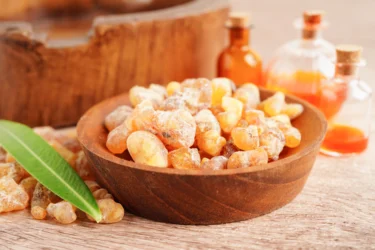
Boswellia is a herbal medicine used since thousands of years in Ayurveda for arthritis. Boswellia might help relieve swelling and pain of arthritis because of its active compound called Boswellic acid3. Boswellia is available in the form of topical creams and tablets. You must consult your healthcare provider before starting with any such health supplements.

Ashwagandha, also known as Indian ginseng in English, is a potent medicinal herb with many health benefits. To relieve arthritis, mix equal amounts of ashwagandha powder, sesame, and kapikachu seeds. Mix it thoroughly. You can take this mixture with warm milk can help relieve problems like arthritis. It helps relieve tiredness and fatigue in people with arthritis because of its rejuvenating property5.

Alsi or linseed seeds can be used to ease arthritis. To use alsi seeds, soak them in buttermilk. Let them rest through the night. You can make a paste using the soaked seeds the next day. Apply this paste over the joints. Applying this paste regularly can help relieve joint pain5.

Guduchi or Indian Tinospora has numerous health benefits in conditions like diabetes, fever, and stomach illnesses. It is also a beneficial remedy for arthritis. You can drink guduchi juice regularly to relieve symptoms of arthritis5. The anti-inflammatory benefits of guduchi help reduce the swelling in the joints.

Masha or black grams offer many health benefits. You can make a paste using black gram powder and sesame oil. Mix these ingredients to make a fine paste. The paste can be applied to the joints to relieve the pain and inflammation that accompanies arthritis. It is a valuable remedy for both osteoarthritis and rheumatoid arthritis5.

Eating healthy will help you maintain the right weight for your age and height and reduce unnecessary pressure on your joints. Less pressure can relieve some pain associated with arthritis5. You can follow a healthy diet plan by involving the following in your diet practice
Avoid the following in your diet
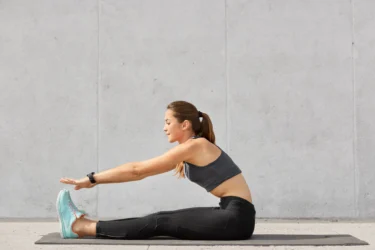
One of the most effective ways to manage arthritis is regular exercise. It is important to find the exercise that works best for you, one which you enjoy doing, so that you regular with it. The type of arthritis can help you find suitable physical activity. Regular exercise can help you by
When you start any exercise program, you might experience some pain. Some amount of pain is normal. However, if you are experiencing pain lasting for more than two hours, you need to consult your physiotherapist or doctor before continuing with further exercise5.
For osteoarthritis, it is recommended to maintain an ideal weight, avoid overusing joints that are damaged and follow a specific plan of exercise that strengthens the muscles supporting the joint to prevent its progression.
Dr. Ashish Bajaj, M.B.B.S., M.D. in Clinical Pharmacology and Toxicology
You must consult with your doctor if you experience joint pain and stiffness for no apparent reason, which lasts for more than a few days and results in swelling, stiffness, and warmth at the joints. If you contact your healthcare provider on the first onset of symptoms, you can prevent the condition from worsening and prevent long-term damage6.
Also Read: Natural Home Remedies For Neck Pain
Arthritis is a severe yet common condition that can present with severe or mild symptoms. It can affect all age groups but is typically seen in the elderly. Arthritis has many types and different symptoms depending on the variant. If you or someone around you suffering from arthritis, you are aware of the loss of quality of life. However, it is possible to make some lifestyle changes and live a comfortable life. You can use herbs like Turmeric, Ginger, Ashwagandha, Guduchi, Alsi, and Boswellia to manage the symptoms of arthritis at home. In addition, exercise and diet changes can help you improve your quality of life.
Also Read: Doctor-Approved Home Remedies For Vertigo
Natural remedies for arthritis are turmeric, ginger, boswellia, ashwagandha, alsi, masha (black gram), and guduchi. You can use these herbs at home to relieve the symptoms of arthritis3,5.
Home treatments for arthritis are exercising regularly under the guidance of a physiotherapist, losing weight if you are overweight and making suitable diet changes to maintain your height-appropriate weight. You can also use herbs like turmeric, ginger, and ashwagandha in your diet to help with arthritis3,5.
Complications of arthritis include reduced quality of life due to pain and immobility, leading to fatigue, anxiety, and depression. Some types of arthritis can increase your risk of developing heart diseases, lung diseases, and diabetes. The loss of physical activity due to arthritis may lead to social isolation, dependence, and loss of function6.
You can reduce the risk of developing arthritis if you
Do regular, low impact exercise
Reduce joint injuries
Maintain a healthy body weight
Avoid tobacco and tobacco-related products1
Running may be difficult for people with arthritis. You can try brisk walking instead. You can consult your doctor before starting with any exercise; they will be able to suggest an exercise that works best for you6.
There are many risk factors that increase the chances of arthritis, which are
Age: Older people are more prone to arthritis.
Weight: Obesity can put stress on your joints.
Lifestyle: Lack of exercising and smoking increase the risk of arthritis.
Sex: Women are more prone to arthritis than men1.
1. Cleveland Clinic. Arthritis: Symptoms, Causes, Types & Treatment [Internet]. [cited 2022 Jun 2]. Available from: https://my.clevelandclinic.org/health/diseases/12061-arthritis
2. National Institute of Arthritis and Musculoskeletal and Skin Disease. What is Arthritis & What Causes it? [Internet]. [cited 2022 Jun 2]. Available from: https://www.niams.nih.gov/health-topics/arthritis
3. Mashhadi NS, Ghiasvand R, Askari G, Hariri M, Darvishi L, Mofid MR. Anti-Oxidative and Anti-Inflammatory Effects of Ginger in Health and Physical Activity: Review of Current Evidence. International Journal of Preventive Medicine [Internet]. 2013 [cited 2022 Jun 10];4(Suppl 1):S36. Available from: https://pubmed.ncbi.nlm.nih.gov/23717767/
4. Ayush Division. Ayurveda offering Herbal healing. Available from: https://esic.gov.in/attachments/publicationfile/7d11b02e5abb4717d53b4ce05efabd21.pdf
5. Patgiri B, Umretia BL, Vaishnav PU, Prajapati PK, Shukla VJ, Ravishankar B. Anti-inflammatory activity of Guduchi Ghana (aqueous extract of Tinospora Cordifolia Miers.). Ayu [Internet]. 2014 [cited 2022 Jun 10];35(1):108. Available from: https://pubmed.ncbi.nlm.nih.gov/25364210/
6. Healthdirect. Arthritis – causes, symptoms, and treatment. [Internet]. [cited 2022 Jun 2]. Available from: https://www.healthdirect.gov.au/arthritis
7. Hekmatpou D, Mehrabi F, Rahzani K, Aminiyan A. The Effect of Aloe Vera Clinical Trials on Prevention and Healing of Skin Wound: A Systematic Review. Iran J Med Sci. 2019 Jan;44(1):1-9. PMID: 30666070; PMCID: PMC6330525. Available from: https://pmc.ncbi.nlm.nih.gov/articles/PMC6330525/
Disclaimer: The information provided here is for educational/awareness purposes only and is not intended to be a substitute for medical treatment by a healthcare professional and should not be relied upon to diagnose or treat any medical condition. The reader should consult a registered medical practitioner to determine the appropriateness of the information and before consuming any medication. PharmEasy does not provide any guarantee or warranty (express or implied) regarding the accuracy, adequacy, completeness, legality, reliability or usefulness of the information; and disclaims any liability arising thereof.
Links and product recommendations in the information provided here are advertisements of third-party products available on the website. PharmEasy does not make any representation on the accuracy or suitability of such products/services. Advertisements do not influence the editorial decisions or content. The information in this blog is subject to change without notice. The authors and administrators reserve the right to modify, add, or remove content without notification. It is your responsibility to review this disclaimer regularly for any changes.
You might want to go out for a picnic or a quick swim to break the summer heat. These activities are all fun and games till you get sunburns.
Skin damage due to excessive exposure to ultraviolet (UV) rays present in sunlight is called sunburn. You can also get sunburns from artificial sources of UV light, such as tanning beds. Sunburn is instead a radiation burn1. You can notice a sunburn within 11 minutes of exposure. The skin will start turning red within two to six hours. Your skin will continue to develop sunburn for the next few days. Depending on the severity of your sunburn, it might take a few days or weeks for the skin to heal.
If you have a mild sunburn, you can take care of it at home. However, a severe and blistered sunburn requires immediate medical attention. Getting a sunburn repeatedly can cause premature skin wrinkling and skin cancer in the long run2. So, it’s best to take necessary precautions and avoid sunburns.
Adequate exposure to sunlight is essential to get sufficient vitamin D which is important for bone health and immune system function. It is also important to prevent oneself from sunburn as prolonged exposure is implicated in the causation of skin cancer.
Dr. Ashish Bajaj, M.B.B.S., M.D. in Clinical Pharmacology and Toxicology
Sunburns occur because of overexposure to UV radiation. You can develop sunburn when the UV exposure overpowers melanin’s ability to protect the skin. If you have light skin colour, you may develop a sunburn within 15 minutes of sun exposure. People with dusky skin tones tolerate sun exposure for hours without developing a sunburn3.
Risk factors for developing a sunburn:
Sunburns are categorised into three types depending on the severity of skin damage. Common types of sunburn include:
In rare circumstances, people may develop a third-degree sunburn. This type of damage can cause severe damage to all skin layers and destroy nerves. This requires emergency medical care and treatment.
Prevention is easy and straightforward. A broad-spectrum sunscreen with SPF of at least 30 should be applied 30 minutes before sun exposure and every 90 minutes, after that. Water resistant sunscreen should be considered and frequently reapplied when spending time in the water. Sun protective clothing should be worn as an added barrier.
Dr. M.G. Kartheeka, MBBS, MD(Pediatrics)
Symptoms of sunburn vary depending on the severity of the burn.
Symptoms of first-degree sunburn are:
Symptoms of second-degree sunburn are:
Second-degree burns might be accompanied by heat illness. Symptoms of heat illness include:
Symptoms of a third-degree sunburn include:
Below are some remedies that you can use to care for sunburned skin at home. Although these home remedies can be used for minor sunburns, you need to reach out to your healthcare professional and receive help if you have a severe form of sunburn.

You need to drink more water to stay hydrated when dealing with a sunburn. Sunburns draw the water from the body to the skin surface, rendering the person dehydrated. Drinking excess water can help you prevent dehydration caused by sunburns4.

You can apply a good moisturiser to the affected area if your skin is not too painful to touch. Using a moisturiser that contains aloe vera or soy can help you soothe the sunburned skin. Moisturiser will help boost the moisture content of the skin. Avoid using butter on the sunburned skin. If you use butter or petroleum jelly, or any other oil-based product on the affected skin, it might block the skin pores and lead to an infection2,4.
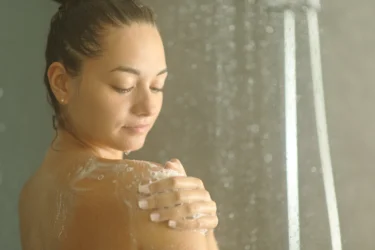
You can try taking cool baths or showers frequently. It will help you reduce the pain. Pat yourself dry after coming out of the shower but remember to leave some water on the skin. Applying a good moisturiser straight after the shower will help you retain the moisture in the skin4.
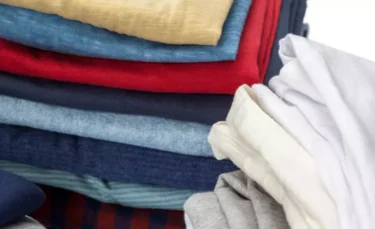
You need to protect the sunburned skin as it heals. Before venturing out, wear clothes that cover your skin. Wear clothes made of tightly woven fabrics. A tightly woven fabric does not allow light to come through when you hold it against a bright light. You can also try wearing loose cotton clothing3,4.
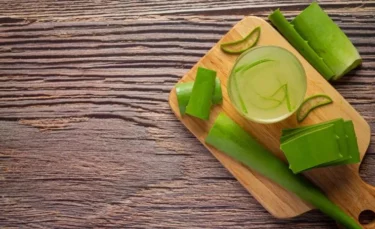
Aloe vera is an essential natural ingredient for dealing with many skin conditions. You can use aloe vera to relieve sunburns. It can also get rid of itching and help heal the blisters. It also provides a soothing sensation to the skin due to vitamin C and vitamin B. You can use aloe vera gel to aid in healing sunburned skin. Aloe vera gel can be rubbed directly on the affected area5.

Tea is an ingredient that most people have in their kitchens. It is a common home remedy used to relieve sunburns. You can apply cooled black tea directly to the sunburned skin. Certain compounds present in black tea help remove the heat from the sunburned skin. Black tea might help repair skin damage and prevent cancer6.
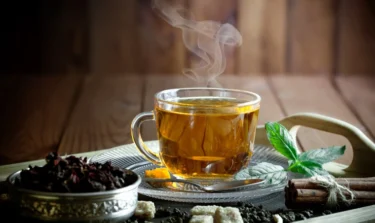
Green tea has good anti-inflammatory and antioxidant properties. It helps to deal with adverse reactions on the skin, like sunburn after UV exposure. It can help reduce skin redness and skin damage. Green tea can be applied to the sunburned area to relieve skin damage6.
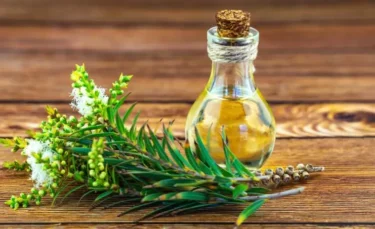
Tea tree oil is a popular ingredient found in many sunscreen products. Tea tree oil can help manage sunburn by improving the blood flow to the skin’s blood vessels, bringing essential nutrients to the damaged skin6. To use tea tree oil, dilute it with some carrier oils like coconut, almond, or olive. Avoid using pure tea tree oil directly on the affected skin.
Also Read: Best Home Remedies for Clear Skin
If you notice any of the signs mentioned below, you should contact your healthcare provider.
Also Read: Home Remedies For Tanned Skin
Sunburn is nothing but skin damage due to overexposure to ultraviolet radiation. Depending on the severity of sunburn, it can take a few days to a few weeks to heal completely. Getting sunburned frequently can increase your risk of skin cancer. Sunburns can be taken care of at home. You can use some at-home remedies to relieve sunburns and their symptoms. For example, ingredients like aloe vera, green tea, and tea tree oil can be used to relieve sunburns. If your sunburn is minor, which is a first-degree sunburn, it might heal on its own after some time. In case of severe sunburn, you need to contact your healthcare provider and receive timely treatment.
Herbal home remedies for relieving sunburn include aloe vera gel, green tea, black tea, and tea tree oil. Other home remedies for sunburn are moisturising, avoiding dehydration, taking cool showers, and protecting the sunburned area from further damage. Minor sunburns can heal at home on their own, but if your sunburn is severe, you need to seek medical help4,6.
You can prevent yourself from getting sunburned if you:
Use a broad-spectrum sunscreen with a sun protection factor (SPF) of 30 or higher. Apply enough sunscreen to cover the exposed skin completely. Reapply the sunscreen every two hours.
Wear a lip balm that offers sun protection.
Wear sunglasses that provide UV protection.
Stay indoors when the solar radiation is the strongest, between 10 AM to 4 PM.
Wear a hat with a brim.
Wear protective clothing in lighter shades3.
You can use aloe vera gel to relieve sunburns. Aloe vera gel can be used directly on sunburned skin. It helps soothe the skin and heal blisters. Aloe vera gel can also help in getting rid of the itching5.
Tea tree oil improves the flow of blood in the blood vessels of the skin, which helps bring nutrients to the skin and promotes the healing of the sunburned skin6. To use tea tree oil, you can dilute it with some carrier oils like almond, olive, or coconut. Apply the diluted oil to the skin to heal the sunburned skin.
There is no instant cure for sunburns. The healing time of sunburns depends on the severity of the skin damage. It can take a few days to some weeks for sunburned skin to heal. First-degree sunburns, which are minor ones, can take a few days to weeks to heal completely. Whereas second-degree sunburns need several weeks to heal1.
1. Cleveland Clinic. Sunburn: Causes, Symptoms and Treatment [Internet]. [cited 2022 May 27]. Available from: https://my.clevelandclinic.org/health/diseases/21858-sunburn
2. Better Health Channel. Sunburn [Internet]. [cited 2022 May 27]. Available from: https://www.betterhealth.vic.gov.au/health/conditionsandtreatments/sunburn
3. MedlinePlus Medical Encyclopedia. Sunburn [Internet]. [cited 2022 May 27]. Available from: https://medlineplus.gov/ency/article/003227.htm
4. American Academy of Dermatology Association. How to treat sunburn [Internet]. [cited 2022 May 27]. Available from: https://www.aad.org/public/everyday-care/injured-skin/burns/treat-sunburn
5. January A ·, Qadir MI. Medicinal and cosmetological importance of Aloe vera. International Journal of Natural Therapy. 2009;2:21–6. Available from: http://www.researchgate.net/publication/233818204
6. Korać RR, Khambholja KM. Potential of herbs in skin protection from ultraviolet radiation. Pharmacognosy Reviews. 2011 Jul;5(10):164. Available from: https://www.ncbi.nlm.nih.gov/pmc/articles/PMC3263051/
Disclaimer: The information provided here is for educational/awareness purposes only and is not intended to be a substitute for medical treatment by a healthcare professional and should not be relied upon to diagnose or treat any medical condition. The reader should consult a registered medical practitioner to determine the appropriateness of the information and before consuming any medication. PharmEasy does not provide any guarantee or warranty (express or implied) regarding the accuracy, adequacy, completeness, legality, reliability or usefulness of the information; and disclaims any liability arising thereof.
Links and product recommendations in the information provided here are advertisements of third-party products available on the website. PharmEasy does not make any representation on the accuracy or suitability of such products/services. Advertisements do not influence the editorial decisions or content. The information in this blog is subject to change without notice. The authors and administrators reserve the right to modify, add, or remove content without notification. It is your responsibility to review this disclaimer regularly for any changes.
Do you have a rash that is so itchy it wakes you up from sleep? Or is your child crankier than usual from lack of sleep at night due to itching? If yes, you should look for rashes with small bumps on the body as they might indicate scabies. If one of the family members has it, you should look for it in others, as it spreads from one person to another when in close contact.
Scabies, also known as Sarcoptes mange, is a condition caused by a tiny mite called Sarcoptes scabiei var hominis. It mainly occurs in tropical areas and crowded places. Your pets can also get scabies as this condition also affects animals, but the causative mite is different. The one affecting animals can cause an allergic reaction in humans, but cannot cause scabies as they cannot adapt and live on humans1.
A tiny mite called Sarcoptes scabiei var hominis causes scabies. The tiny mites make burrows or tunnels under the skin, leading to small itchy bumps on the skin1. Scabies can affect anyone. However, people are more prone to scabies in the following conditions:
Home remedies in scabies are mainly for controlling itching, for effective and proper treatment please consult a dermatologist. Debugging of entire household even if any one is affected is very important.
Dr. M.G. Kartheeka, MBBS MD(Pediatrics)
Early symptoms of scabies (rash and bumps) can appear on the skin four to six weeks after being infected. The rash develops slowly over weeks to months1. Some of the symptoms by which you can recognise scabies are as follows:
Also Read: Natural Home Remedies for Itchy Skin
The rash and itching of scabies can persist for several weeks to a month after treatment, even if the treatment was successful and all the mites and eggs have been killed. Contact your physician if your symptoms still persist after the treatment and are worrisome.
Dr. Ashish Bajaj, M.B.B.S. M.D. in Clinical Pharmacology and Toxicology
The intense itch associated with scabies might leave you scouring for home remedies for scabies all over the internet. We have a few possible home remedies for scabies that might help soothe the irritation. You can try a few of these natural home remedies for scabies and choose the one that best suits you.

Virgin coconut oil may act as an inflammation-reducing agent. It may improve the skin barrier function and protect the skin from ultraviolet B (UVB) radiation by forming a coat on the skin. Therefore, it may be useful in many inflammatory skin conditions too, such as xerosis (abnormally dry skin) and atopic dermatitis (itchy skin inflammation) to soothe skin irritation2.
The use of virgin coconut oil for scabies does not have proper scientific backing, yet it is being used by many people as a home remedy for scabies. For a natural home remedy for scabies, coconut oil, preferably virgin coconut oil, must be applied gently to the rashes with a cotton swab.

A study showed that tea tree oil was more effective in killing the scabies mites (scabicidal properties) than other commonly used agents. Moreover, it also showed minimum side effects during the trial3.
You may use tea tree oil as a natural home remedy for scabies by applying a tiny bit of this oil to your rashes. For example, use a cotton swab and gently dab the tea tree oil onto the rashes.
You can also dilute some tea tree oil in coconut oil and apply it to your rashes as a scabies home remedy. However, if you experience any allergic reactions, discontinue its use and reach out to your healthcare provider for accurate treatment.

Aloe vera has been used for topical application to manage various skin issues such as scabies and eczema (skin inflammation). It may help to relieve different skin problems such as wounds and burns4. You can use aloe vera gel as one of the natural home remedies for scabies. First, you have to take an aloe vera leaf, wash it thoroughly, slice the leaf open using a knife and extract the aloe vera gel. Then, you can mix this gel with coconut oil and apply it to your rashes as soothing agent for scabies. Alternatively, you can also use aloe vera gels and creams available in the market. However, these are not a replacement for proper scabies treatment.
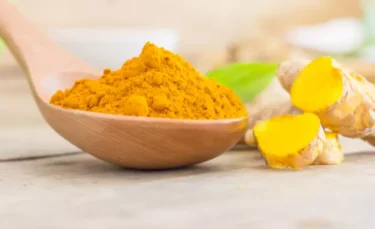
Turmeric has medicinal value and is widely used for its therapeutic properties in herbal and traditional medicine. It is used to manage skin diseases associated with inflammation5. It might also be used as one of the home remedies for scabies and may prove effective. You can make a turmeric paste by adding coconut oil or water to turmeric powder and applying this paste to the rashes. It might help to be a good home remedy for scabies.

Since ancient times, the neem tree’s fruits, leaves, flowers and bark have been used for medicinal purposes. It is used to manage skin diseases and eczema. In folk medicine, neem has been used for conditions caused by insects for its insecticidal properties6. Therefore, neem might be used to manage symptoms of scabies at home. There is inadequate evidence to prove the efficacy of neem for scabies, yet it is often suggested as one of the home remedies for scabies. You can use neem leaves, make a paste by crushing them with some water and then apply it to the rashes as a herbal paste for scabies.

Kundaruki-Bel is the Hindi name of Ivy gourd. In Ayurveda, the leaves of kundaruki-bel might be used as a home remedy for scabies. It might naturally have the potential to provide relief from itching and scabies. However, more studies are required to ascertain such potential uses.
For use as a natural aid for scabies, you have to take a few kundaruki-bel leaves, soak them in coconut oil and leave them in sunlight for a few days. After a few days, you can apply this oil and might get relief from your rashes as well as itching and scabies7.
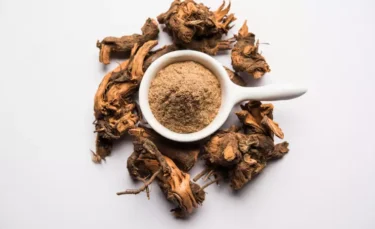
The scientific name of Chitraka is Plumbago zeylanica and it belongs to the family Plumbaginaceae. It is popularly known as Lead war in English and Chitra in Hindi. Ayurveda offers this plant as a natural home remedy for scabies. It might be helpful for various skin infections, carbuncles, ulcers and also in diseases such as scabies. However, more research is required to confirm such effects. You can use the oil obtained from this plant, known as Chitraka Mula tailam, as one of the home remedies for scabies7. You can gently apply this oil to all the skin areas with rashes.
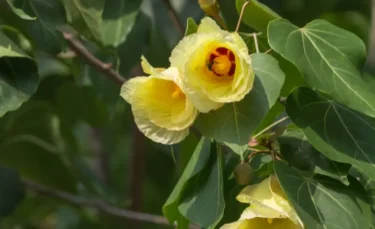
Parisha is commonly known as the Portia tree or the umbrella tree in English. It belongs to the family Malvaceae. The flowers of Parisha may be used as home remedies for scabies. It might be helpful for skin diseases like scabies and pruritis (skin diseases associated with itching of skin). You have to take the flowers of this tree and make a paste of it by crushing them with water. Then, apply this paste to affected skin regions as a natural home remedy for scabies and you might see some symptomatic relief7.
Though there are studies that show the benefits of these herbs and home remedies for the management of scabies, these are insufficient. There is a need for large scale human studies to establish the true extent of the benefits of these home remedies on human health. Thus, these should only be taken with caution and never as a substitute for medical treatment.
Also Read: Natural Home Remedies for Ringworm
The correct management and course of action for scabies will be explained to you by your doctor. However, the following signs indicate that there is a need for course correction and you should revisit your doctor in case:
You must not rely on home remedies alone for the management of scabies and should consult a qualified doctor for any advice for scabies if the symptoms do not improve with home remedies.
The reason behind your intense itch causing sleepless nights might be scabies. Scabies is a condition that occurs when a tiny mite called Sarcoptes scabiei var hominis makes small tunnels under your skin. It causes rashes to develop, which appear as small bumps or pimples. It is a common condition in tropical and crowded regions. One might get infested with scabies, causing mites from another person through close contact. A doctor will devise a management plan for scabies and explain it. However, many home remedies for scabies such as tea tree oil, turmeric, neem leaves and coconut oil can also help relieve itching. You can try a few or all of these ways as natural home remedies for scabies and choose the one you prefer.
Also Read: Simple Home Remedies For Pinworms
No. There is no adequate scientific evidence regarding vinegar as a home remedy for scabies.
There are several home remedies for scabies such as coconut oil, tea tree oil, aloe vera, turmeric, neem, Kundaruki-bel, Parisha and Chitraka2,7 . However, you are advised not to solely rely on these home remedies for scabies. If the symptoms don’t improve, contact your healthcare provider immediately.
Yes. Coconut oil is one of the home remedies for scabies. Virgin coconut oil has been shown to alleviate inflammation and improve skin barrier function in studies. Therefore, it might help relieve symptoms of scabies. You can use it as a home remedy for scabies by gently applying it to your rashes2. Also, avoid relying on home remedies alone to alleviate your symptoms, you should reach out to your healthcare provider and get treatment if the symptoms don’t improve.
No. There is no concrete scientific evidence stating the beneficial effects of apple cider vinegar for scabies. There is a need for more studies in this area. You are advised not to use any herb or remedy without consulting your doctor.
Yes. You can use Parisha as a herbal remedy for scabies. You can use the flowers to make a paste and apply it to your rashes to reap its beneficial effects7. However, if your symptoms don’t improve, reach out to a doctor or healthcare provider.
No. Scabies is a disease caused by a tiny mite known as Sarcoptes scabiei var hominis. It is not a viral disease1.
1. Cleaveland Clinic [Internet]. Scabies; 2022 Mar 23 [cited 2022 Jun 8]. Available from: https://my.clevelandclinic.org/health/diseases/4567-scabies
2. Varma SR, Sivaprakasam TO, Arumugam I, Dilip N, Raghuraman M, Pavan KB, et al. In vitro anti-inflammatory and skin protective properties of Virgin coconut oil. J Tradit Complement Med. 2019 Jan 1;9(1):5-14. Available from: https://www.ncbi.nlm.nih.gov/pmc/articles/PMC6335493/
3. Thomas J, Carson CF, Peterson GM, Walton SF, Hammer KA, Naunton M, et al. Therapeutic Potential of Tea Tree Oil for Scabies. Am J Trop Med Hyg. 2016 Feb 3;94(2):258-66. Available from: https://www.ncbi.nlm.nih.gov/pmc/articles/PMC4751955/
4. Zheng GH, Yang L, Chen HY, Chu JF, Mei L. Aloe vera for prevention and treatment of infusion phlebitis. Cochrane Database Syst Rev. 2014 Jun 1;2014(6):CD009162. Available from: https://www.ncbi.nlm.nih.gov/pmc/articles/PMC6464352/
5. Vollono L, Falconi M, Gaziano R, Iacovelli F, Dika E, Terracciano C, et al. Potential of Curcumin in Skin Disorders. Nutrients. 2019 Sep 1;11(9):2169. Available from: https://www.ncbi.nlm.nih.gov/pmc/articles/PMC6770633/
6. National Research Council (US) Panel on Neem. Neem: A Tree For Solving Global Problems. Washington (DC): National Academies Press (US); 1992. Available from: https://www.ncbi.nlm.nih.gov/books/NBK234637/
7. AYUSH [Internet]. Ayurveda Offering Herbal Healing; [cited 2022 June 8]. 1-128 p. Available from: https://www.esic.nic.in/attachments/publicationfile/7d11b02e5abb4717d53b4ce05efabd21.pdf
Disclaimer: The information provided here is for educational/awareness purposes only and is not intended to be a substitute for medical treatment by a healthcare professional and should not be relied upon to diagnose or treat any medical condition. The reader should consult a registered medical practitioner to determine the appropriateness of the information and before consuming any medication. PharmEasy does not provide any guarantee or warranty (express or implied) regarding the accuracy, adequacy, completeness, legality, reliability or usefulness of the information; and disclaims any liability arising thereof.
Links and product recommendations in the information provided here are advertisements of third-party products available on the website. PharmEasy does not make any representation on the accuracy or suitability of such products/services. Advertisements do not influence the editorial decisions or content. The information in this blog is subject to change without notice. The authors and administrators reserve the right to modify, add, or remove content without notification. It is your responsibility to review this disclaimer regularly for any changes.
Waking up in the morning to find puffed-up eyes is probably not the best way to start the day, but it is sometimes unavoidable. It makes us wonder about all the things that could’ve been the reason for it and regret some of our decisions, like eating salty food. Multiple other reasons can also be the cause of your puffy eye, so you shouldn’t get stuck up at that and move on to find a solution. Usually, the swelling in the eyes goes away in a day, but it can still be annoying, and you might want to relieve the swelling1. However, sometimes the swelling may be due to a medical condition that you might be unaware of, and it would be best to get it checked by a doctor and get the required puffy eye treatment.
There can be many reasons that cause puffiness of the eyes some of them are as follows:
One of more important causes of puffy eyes is high salt fast foods everyone is eating today. Eating a lot of salty foods causes you to retain water and leads to swelling. Restricting the amount of salt in diet has very important health benefits.
Dr. M.G. Kartheeka, MBBS MD(Pediatrics)
Puffy eyes can occur due to many reasons, as stated above. You can say that you have swelling by looking at your eye. If you notice swelling in your upper or lower eyelid or beneath your eyes, it means that you have puffy eyes. Eye puffiness occurs when there’s a fluid build-up in the surrounding tissues of the eye. Eye puffing usually resolves on its own in a day or two, and if it doesn’t, it can indicate that you have a serious problem and should consult a doctor1.
Swelling or puffing of eyes can be an annoyance that you want to get rid of quickly. It might pose as a hindrance to your daily activities. Are you looking for home remedies for puffy eyes? Here are a few home remedies on how to reduce puffy eyes that you might find useful.

As already discussed, eye swelling can be caused due to an allergy or an irritant. In such a case, washing or rinsing the eye can be a puffy eyes home remedy and provide some relief. Rinsing eyes with plain water seems to be a good idea, especially when there’s a discharge from your eyes. Washing or rinsing the eyes with cool water may also prove to be one of the soothing home remedies for eye swelling that occurs due to allergies1.

A tea bag is one of the popular home remedies for swollen eyes. This may be because tea contains caffeine that causes narrowing of blood vessels. This action of tea bags can be beneficial for puffy eyes2. This remedy is easy to use you can use either green tea bags on your eyes or black tea bags to make tea by dipping them in warm water. Then, you can remove these tea bags and chill them in the fridge for some time. After a while, you can take them out of the refrigerator and put them on your closed eyes. You might be able to see the difference in some time.
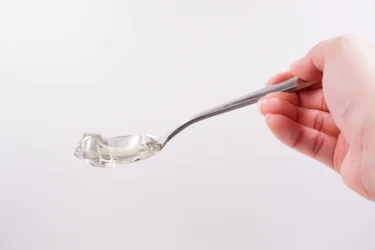
Chilled spoons can prove to be a valuable remedy for puffy eyes by acting as a cold compress for puffy eyes. Cooling the area reduces the blood flow, thus alleviating inflammation and swelling2. This is another straightforward home remedy that you can make use of when your eyes become puffy. All you have to do is take a couple of spoons and chill them in the freezer for some time until they become cool. Then, take the chilled spoons and place them over your puffed-up eyes. Doing this might soothe your eyes and act as one of the easiest home remedies for puffy eyes.
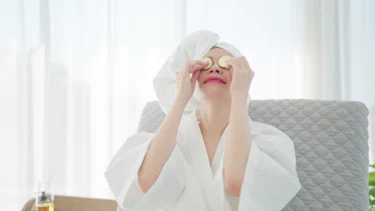
Cooled cucumber acts as a cold compress and might help reduce swelling of the eyes2. You might have seen cucumber being used in spas and salons to cover the eyes. It looks so relaxing! Well, this is one of the home remedies for puffy eyes that is as simple and relaxing as that. You just have to take a few cucumber slices and chill them in your freezer for a while. Then you can just put them on your eyes, sit back and relax. After a while, you might be able to notice decreased puffiness of your eyes.
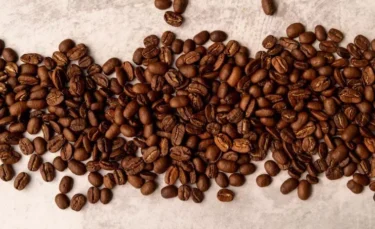
As mentioned earlier, caffeine narrows the blood vessels, thus reducing the blood flow to the area, leading to decreased swelling2. You can use coffee as one of the natural home remedies for puffy eyes. For this, you have to take a little bit of ground coffee powder, mix a little bit of coconut oil into it and make a paste-like consistency. Apply this mixture under your eyes carefully, ensuring that you don’t put it inside your eyes. Leave it on for some time and wash it off with cold water.
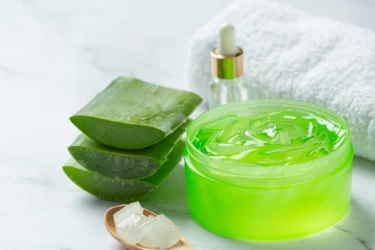
Aloe vera has a variety of therapeutic uses3. It might have potential beneficial effects for managing swelling of the eyes due to ageing thus, it can be used as one of the home remedies for puffy eyes or eye bags. You can mix freshly acquired aloe vera gel with a little bit of lemon juice or olive and apply it under your eyes to get rid of swelling. Various creams containing aloe vera gel are also available in the market, and you can use them as one of the home remedies for puffy eyes.
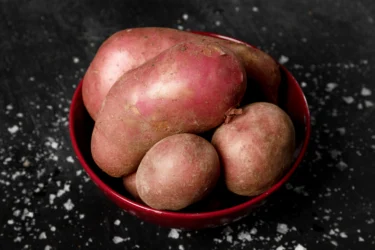
Potatoes are highly beneficial for the skin therefore, they are used to prepare homemade face packs. Potato is used to ward off dark circles, clear up the skin’s blemishes, get rid of wrinkles, lighten the skin tone, and reduce swelling4. It might be beneficial in relieving swelling under the eyes as well. You can use sliced and cooled potatoes to apply around your eyes as one of the most popular home remedies for bags under the eyes. You can also use the juice of potato and apply it to the skin around your eyes.
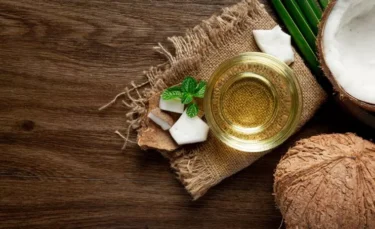
Coconut oil is good for the skin as it helps produce collagen and prevents collagen destruction. It also has activity against viruses and fungi5. These properties can be beneficial in reducing the swelling of the eyes. As one of the natural home remedies for eye bags, you can take a little bit of coconut oil and apply it to your face, especially under your eyes, for eye swelling treatment at home. It might take a little longer, but you might be able to see its beneficial effects with constant usage.
Also Read: Natural Home Remedies For Itchy Eyes
Didn’t find a solution for how to cure swollen eyes yet, you should visit an ophthalmologist (eye doctor) if the puffiness of your eyes does not go away in one or two days or if you notice any of the following symptoms that might indicate a more severe problem:
If you experience chronic eye puffiness, talk to your doctor about treatment options, like cosmetic surgery. In some instances, puffy eyes may be a sign of a more serious condition.
Dr. Ashish Bajaj, M.B.B.S. M.D. in Clinical Pharmacology and Toxicology
Anyone can have puffy eyes, and it can hinder daily activities. It can be caused due to excessive salt intake, old age, thyroid problems or eye infections. The causes range widely, but the solutions are equally wide-ranging. You can try home remedies for puffy eyes like tea bags, coffee, cucumber, coconut oil etc. and see what suits you best. However, if the swelling doesn’t go away in a couple of days or you notice decreased vision, blurry vision or pain in your eyes or are seeing floaters, then you should visit an ophthalmologist and get yourself checked.
Also Read: Effective Home Remedies for Red Eyes
Yes, intake of food containing a high amount of salt can cause swelling of the eyes2.
There is a rare chance of puffy eyes being an indicator of cancer. Puffy eyes mostly occur due to ageing, genes, high salt intake, eye infections, etc1,2
Yes, tea bags contain caffeine, and they can help reduce the puffiness of the eyes by constricting the blood vessels. You can use chilled green tea bags or black tea bags on your eyes as one of the home remedies for puffy eyes2.
No. There is no evidence stating the use of ginger powder as one of the home remedies for puffy eyes.
Yes, inadequate sleep can lead to fluid retention and blood vessel dilation, resulting in puffy eyes. Prioritizing good sleep can help prevent this.
High-sodium foods, processed snacks and excessive alcohol consumption can contribute to fluid retention and exacerbate puffy eyes.
Applying cold spoons, chilled cucumber slices or aloe vera gel can provide quick relief by soothing and constricting blood vessels.
1. Puffy Eyes: What Causes Them and What To Do About It – Health Essentials from Cleveland Clinic [Internet]. Cleaveland Clinic. 2019 [cited 2022 Jun 2]. Available from: https://health.clevelandclinic.org/puffy-eyes-what-causes-them-and-what-to-do-about-it/
2. How to Get Rid of Bags under Your Eyes [Internet]. John Hopkins Medicine. [cited 2022 Jun 2]. p. 1–2. Available from: https://www.hopkinsmedicine.org/health/treatment-tests-and-therapies/how-to-get-rid-of-bags-under-your-eyes
3. Surjushe A, Vasani R, Saple D. ALOE VERA: A SHORT REVIEW. Indian J Dermatol [Internet]. 2008 Oct 1 [cited 2022 Mar 30];53(4):163. Available from: https://www.ncbi.nlm.nih.gov/pmc/articles/PMC2763764/
4. Kshitij Parmar NKS. Nutritional Value and Health Benefits of Potatoes. Rashtriya Krishi [Internet]. 2017;12(1):117–9. Available from: http://researchjournal.co.in/upload/assignments/12_117-119.pdf
5. Lin TK, Zhong L, Santiago JL. Anti-inflammatory and skin barrier repair effects of topical application of some plant oils. Int J Mol Sci [Internet]. 2018;19(1). Available from: https://www.ncbi.nlm.nih.gov/pmc/articles/PMC5796020/
Disclaimer: The information provided here is for educational/awareness purposes only and is not intended to be a substitute for medical treatment by a healthcare professional and should not be relied upon to diagnose or treat any medical condition. The reader should consult a registered medical practitioner to determine the appropriateness of the information and before consuming any medication. PharmEasy does not provide any guarantee or warranty (express or implied) regarding the accuracy, adequacy, completeness, legality, reliability or usefulness of the information; and disclaims any liability arising thereof.
Links and product recommendations in the information provided here are advertisements of third-party products available on the website. PharmEasy does not make any representation on the accuracy or suitability of such products/services. Advertisements do not influence the editorial decisions or content. The information in this blog is subject to change without notice. The authors and administrators reserve the right to modify, add, or remove content without notification. It is your responsibility to review this disclaimer regularly for any changes.
You are enjoying a fun day out in the garden, it’s the weekend, and you suddenly feel this stinging, burning sensation on your neck, and it turns out it’s a bee sting. Bees can sting when they are disturbed or you upset them. Bee stinger has venom, which gives you the itch and burning sensation.
Honeybees have this special hook attached to their stinger. When the honeybee tries to fly away after stinging, the stinger gets broken, and the honeybees die. Some people may develop allergic reactions to bee stings. Contact your healthcare provider immediately if you notice any allergies after being stung by a bee1,2. To take care of a bee sting, you can use the home remedies mentioned below.
When you get stung by a honeybee, the stinger gets embedded in the skin. The stinger contains a substance called venom that causes the symptoms of a bee sting. The longer the stinger stays embedded in the skin, the more venom is released1,2.
If you are stung by a honeybee, you may experience symptoms in different parts of your body, as mentioned below:
Bee stings can become life threatening, because there are chances that the person can land up into hypersensitivity reaction,therefore every bee sting warrants a physcian examination and proper treatment so that any life threatening condition can be averted.You cannot rely on home remedies totally
Dr. Nikhil Yadav, MBBS MD, CCEBDM
The home remedies mentioned below can be used for dealing with a honey bee sting.

Check if the stinger is still attached to your skin. You need to remove this stinger as quickly as possible to prevent further harm. The longer the stinger stays embedded in the skin, it will release more venom. Be careful while removing the stinger. Avoid using tweezers. The tweezer might squeeze the sting, releasing more venom into the skin. Remove the stinger by scraping it with gauze, or you can use your fingernails4.

Placing ice (wrapped in cloth) or ice packs at the affected area will help you reduce the swelling of the sting. Make sure to wash the site with soap and water first. If you notice swelling on other parts of your body, such as the neck or face, you need to reach out to your healthcare provider as it might signify an allergic reaction. You might also experience nausea, hives, difficulty breathing, and dizziness if you have an allergic reaction4.

Although bees sting only once most of the time, it is best to avoid getting stung again to prevent the condition from worsening. If you are stung by a bee, you need to walk away calmly. Staying calm will help you avoid getting stung again4.

Patta ajwain, also known as Indian borage or Indian mint in English, is a medicinal herb used for various skin and health conditions. You can crush the leaves of Patta ajwain to make a paste. You can apply this crushed paste to the affected area to get relief from bee stings5. It will help to heal the sting. Indian borage leaves have potent antibacterial properties that can help prevent the sting from getting infected6.

Bay leaves, or Tej Patta, are a common ingredient in many Indian kitchens. This spice has many health benefits. You can make a paste of bay leaves using coconut oil and bay leaf powder. This paste can be applied on the site to get relief from the symptoms of bee stings5. Bay leaves possess anti-inflammatory, antibacterial, and pain-relieving properties. These properties might help to reduce the swelling and pain and help prevent the sting from getting infected7.
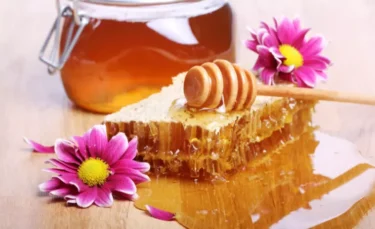
Honey has been used as a remedy for many skin conditions since ancient times. Honey provides many benefits; it can soothe the skin and aid in wound healing. Honey is also known to possess antiseptic properties that help prevent the growth of bacteria8. Applying honey to the bee sting can help to soothe and heal the skin and provide relief from the symptoms of a bee sting.

Applying aloe vera can help to deal with insect bites. Aloe vera can also relieve swelling and itching on the skin. You can slice open the aloe vera leaf and apply the gel to the area of the sting to soothe it9. Make sure to use pure aloe vera gel. Many aloe vera gel-containing products contain fragrances and other chemicals that irritate the skin10.

Lavender oil is an effective remedy for many skin conditions. It is also effective in managing insect bites11. Lavender oil is an effective pain-killer; it might help with the pain associated with the bee sting12. You can apply lavender oil after diluting it with other carrier oils like olive and coconut oil. However, avoid using lavender oil directly as it might cause skin irritation and other allergic reactions.
Also Read: Effective Home Remedies for Lice Removal
Most people who get stung do not experience any severe effects. However,
You need to immediately contact your healthcare provider.
Also Read: Simple Home Remedies For Pinworms
Getting stung by a bee can be irritating, and you might also feel burning and itching at the sting site. If you get stung by a honeybee, try to stay calm and remove the stinger first. Herbal remedies like honey, aloe vera gel, bay leaves, or Indian borage can be used to take care of a bee sting at home. Most of the time, people do not have any severe symptoms after getting stung. Still, some people might develop allergic reactions to bee stings. If you develop signs of allergy, such as hives, difficulty in breathing, sudden drop in blood flow through the body, and swelling in the throat, lips, or tongue after getting stung, you need to reach out to your healthcare provider immediately.
There are many natural remedies for bee stings. You can use bay leaves or Indian borage leaves to relieve bee stings. Honey, aloe vera gel, and lavender oil can also take care of a honeybee sting. Make sure to dilute the lavender oil before using it. Dilute the lavender oil with some carrier oil like coconut or olive. You can also use ice packs to reduce the swelling and get relief5,8,11.
Some people may show allergic reactions to bee stings. This allergic reaction may include difficulty in breathing, hives, shock (sudden drop in blood flow through the body), and swelling in the throat, lips, or tongue. If you or someone you know show these signs, contact your healthcare provider or physician immediately3,4.
Yes, ice can be used to take care of the bee sting as it helps reduce the swelling at the affected site4. You can wrap the ice in a cloth or use an ice pack.
You should be careful when removing the stinger. The stinger contains a substance called venom. Squeezing the stinger might release more venom into your skin. So, avoid using tweezers to remove the stinger. You can remove the stinger by scraping it with the help of gauze4.
Honey has skin-soothing, antiseptic, and wound-healing properties. Applying honey to the stung site might help with the swelling, aid in healing and help prevent the site from getting affected8.
1. Nemours KidsHealth. Hey! A Bee Stung Me! (for Kids) [Internet]. [cited 2022 Jun 1]. Available from: https://kidshealth.org/en/kids/bee.html
2. MedlinePlus Medical Encyclopedia. Bee, wasp, hornet, or yellow jacket sting: [Internet]. [cited 2022 Jun 1]. Available from: https://medlineplus.gov/ency/article/002847.htm
3. Mount Sinai – New York. Bee poison Information [Internet]. [cited 2022 Jun 1]. Available from: https://www.mountsinai.org/health-library/poison/bee-poison
4. American Academy of Dermatology Association. How to treat a bee sting [Internet]. [cited 2022 May 31]. Available from: https://www.aad.org/public/everyday-care/injured-skin/bites/treat-bee-sting
5. Ayush Division. Ayurveda offering Herbal healing. Available from: https://www.esic.nic.in/attachments/publicationfile/7d11b02e5abb4717d53b4ce05efabd21.pdf
6. Gupta SK, Negi PS. Antibacterial Activity of Indian Borage (Plectranthus amboinicus Benth) Leaf Extracts in Food Systems andӬAgainst Natural Microflora in Chicken Meat. Food Technology and Biotechnology [Internet]. 2016 Jan 1 [cited 2022 Jun 14];54(1):90. Available from: https://www.ncbi.nlm.nih.gov/pmc/articles/PMC5105625/
7. Batool S, Khera RA, Hanif MA, Ayub MA. Bay Leaf. Medicinal Plants of South Asia [Internet]. 2020 Jan 1 [cited 2022 Jun 14];63. Available from: https://www.ncbi.nlm.nih.gov/pmc/articles/PMC7152419/
8. Burlando B, Cornara L. Honey in dermatology and skin care: a review. J Cosmet Dermatol [Internet]. 2013 Dec [cited 2022 May 31];12(4):306–13. Available from: https://pubmed.ncbi.nlm.nih.gov/24305429/
9. Bhowmik D. Aloe Vera: The Miracle Plant Its Medicinal and Traditional Uses in India. Journal of Pharmacognosy and Phytochemistry [Internet]. 2012;1(4):119–26. Available from: https://www.researchgate.net/publication/304253232_Aloe_Vera_The_Miracle_Plant_Its_Medicinal_and_Traditional_Uses_in_India
10. Cleveland Clinic. Itchy Skin? Try These 7 Home Remedies – Cleveland Clinic [Internet]. [cited 2022 Apr 19]. Available from: https://health.clevelandclinic.org/home-remedies-for-itchy-skin/
11. Cavanagh HMA, Wilkinson JM. Biological activities of Lavender essential oil. Phytotherapy Research [Internet]. 2002 Jun 1 [cited 2022 May 31];16(4):301–8. Available from: https://onlinelibrary.wiley.com/doi/full/10.1002/ptr.1103
12. Koulivand PH, Khaleghi Ghadiri M, Gorji A. Lavender and the Nervous System. Evidence-based Complementary and Alternative Medicine : eCAM [Internet]. 2013 [cited 2022 Jun 14];2013. Available from: https://www.ncbi.nlm.nih.gov/pmc/articles/PMC3612440/
Disclaimer: The information provided here is for educational/awareness purposes only and is not intended to be a substitute for medical treatment by a healthcare professional and should not be relied upon to diagnose or treat any medical condition. The reader should consult a registered medical practitioner to determine the appropriateness of the information and before consuming any medication. PharmEasy does not provide any guarantee or warranty (express or implied) regarding the accuracy, adequacy, completeness, legality, reliability or usefulness of the information; and disclaims any liability arising thereof.
Links and product recommendations in the information provided here are advertisements of third-party products available on the website. PharmEasy does not make any representation on the accuracy or suitability of such products/services. Advertisements do not influence the editorial decisions or content. The information in this blog is subject to change without notice. The authors and administrators reserve the right to modify, add, or remove content without notification. It is your responsibility to review this disclaimer regularly for any changes.
Could not sleep well last night and woke up feeling all cranky? We have all suffered from not getting enough sleep or insufficient sleep quality. As a result, people often search for ways to improve their sleep quality.
Adults need, on average, seven hours of uninterrupted good quality sleep each night. Quality of sleep is as essential as sleep duration. Good quality of sleep is the need of the hour. People need to get enough good sleep to live a healthy life; it should not be considered a luxury. Not getting sufficient sleep can make you more prone to many diseases and conditions1,2.
If you face difficulty in falling asleep or wake up tired even after getting plenty of sleep, you need to contact your healthcare provider and get the necessary diagnosis. Meanwhile, you can follow the home remedies mentioned below to improve your sleep quality.
Many factors can hinder your sleep and affect your sleep quality. These causes are:
Loss of sleep itself can be a symptom of some sleep disorders. It can have many effects on your health. It can also impact your immunity, nervous system, hormones and the heart3. Poor quality of sleep or getting insufficient sleep can:
If you have trouble falling asleep regularly, you might be suffering from certain sleep disorders. Common symptoms of sleep disorders are given as follows:
You can follow the home remedies mentioned below to help you sleep better. In addition, some of these natural remedies for sleep can be taken with a glass of milk before bed.

This is an easily available product. Drinking a glass of warm milk before bed may be an effective way to improve sleep quality. Milk helps to promote good sleep. So, drinking warm milk might help induce sleep4.

Chamomile tea is a herbal tea with many health benefits. The flavonoids present in chamomile tea might have various therapeutic activities. Flavonoids can interact with specific receptors in the brain and induce sleep, and hence chamomile tea is considered one of the natural remedies for deep sleep. You can drink some warm chamomile tea to help you sleep better4.

Cinnamon is present in a standard kitchen in Indian households. It is mainly used as a spice and added to various foods and dishes. This spice might be good for your health. You mix the cinnamon powder in a glass of warm milk. You can also add some honey for taste. Drinking this milk before going to bed might help you get a good sleep5.
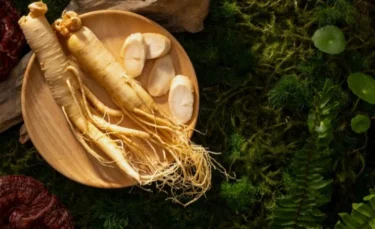
Indian ginseng or ashwagandha is a potent medicinal herb with many valuable properties for health. Ashwagandha is widely considered one of the home remedies for sleeplessness and might be beneficial in relieving insomnia. Before going to bed, take some ashwagandha root powder with a cup of milk. You can also put some sugar for taste. Taking this mixture may help you sleep better5.

Liquorice is also known as Mulethi in Hindi. Liquorice root is a potent medicinal ingredient which might offer several health advantages. Liquorice might also be effective for dealing with insomnia. You can take liquorice root powder with a glass of warm milk before bed. It may help you have a good sleep5.

Almonds are commonly known as Badam in Hindi. They are often used in Indian cooking and are added to various desserts. They may be valuable for health and the brain. They might have a calming and soothing effect on the mind and may also help induce sleep5. You can crush a few almonds to make powder. Take this powder with a glass of warm milk before going to bed.

Developing a sleep cycle may help your body make a healthy sleep routine and rest properly. It might also enhance the quality of your sleep. You can create a sleep pattern by waking up and going to bed at about the same time every day6.

Exposure to computer screens, television screens, or mobile screens before bed can cause sleep disruption. Therefore, it is advised that you limit your screen time before bed. Your mind should relate being in bed to sleeping and not using a computer or watching TV. Also, avoid staying in bed if you feel awake6.
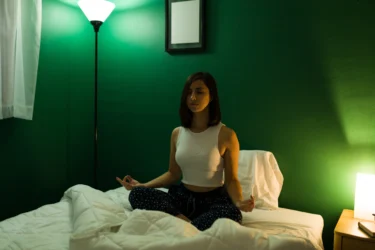
Dedicate a specific time before going to bed to relax. During this time, avoid thinking about tomorrow or solving any problem. Try a few relaxation techniques. Find a method that suits you. Also, refrain from using cell phones or computers during this period6.

If you have a habit of napping during the daytime, it can make it difficult to fall asleep at night. If you genuinely need to take a good nap, limit the duration to not more than half an hour. Also, avoid taking naps four hours before your designated bedtime6.
Apart from the home remedies, here are some things that you can follow to get good quality sleep:
Though there are studies that show the benefits of the given herbs and home remedies in getting good sleep, these are insufficient. There is a need for further studies to establish the true extent of the benefits of these herbs and home remedies on human health. Thus, these should be taken with caution and never as a substitute for medical treatment.
Also Read: Best Home Remedies for Snoring
You can reach out to your doctor:
You must not rely on home remedies alone to get a good sleep. You should consult a doctor for any advice on getting good sleep if the symptoms don’t improve.
To stay healthy and fit, an adult requires seven hours of quality sleep daily. Unfortunately, a busy life can make it hard for you to get enough quality sleep. But, you can follow specific tips on how to get sleep naturally and use some home remedies to improve your sleep quality. For example, making a sleep schedule and limiting your screen time before bed are some habits that may help you sleep better. Also, herbal ingredients such as Indian ginseng, liquorice, chamomile, cinnamon and almonds can be taken with a glass of warm milk to help improve sleep quality.
However, if your sleep problems interfere with your daily activities and affect how you function, reach out to your healthcare provider immediately. Also, if you face difficulty falling asleep daily, you might be suffering from some sleep disorder. In such cases, contact your doctor to get the necessary diagnosis.
Also Read: Best Home Remedies For Hangover
You can follow various home remedies such as ashwagandha, chamomile tea, liquorice, almonds and cinnamon that might help you sleep better. These can be taken with warm milk before bed to improve sleep quality4,5.
A lot of people experience trouble falling asleep on some days, but if you face this difficulty regularly and the sleep problems have started interfering with your day-to-day activities, you must contact your healthcare provider1.
Not getting enough sleep or poor sleep quality can make you feel tired and sleepy throughout the day. Try improving your sleep quality or getting sufficient sleep at night. If you experience these problems daily, contact your doctor and get medical help1.
Yes. Chamomile is valuable in improving the quality of sleep. It contains flavonoids that interact with specific brain receptors and may induce sleep. Sipping some warm chamomile tea before bed might help you sleep better4.
Essential oils like lavender, chamomile and bergamot are popular for their potential relaxing and calming properties. Diffusing them in the bedroom or adding a few drops to a bath may create a serene environment conducive to sleep.
Regular exercise can promote better sleep by improving overall health and reducing stress. Gentle exercises like yoga or tai chi in the evening can be particularly calming. However, intense exercise too close to bedtime might be stimulating for some individuals.
Many experts recommend avoiding screens from phones, tablets or computers before bed, as the blue light emitted can interfere with the body’s production of melatonin, a hormone that regulates sleep. Consider adopting a screen-free routine an hour or more before bedtime to help signal to your body that it’s time to wind down.
Creating a calming bedroom environment can significantly impact sleep quality. Consider using blackout curtains, keeping the room at a comfortable temperature, using soft and supportive bedding and eliminating noise with white noise machines or earplugs.
1. MyHealthfinder [Internet]. Get Enough Sleep; [cited 2022 Jun 10]. Available from: https://odphp.health.gov/myhealthfinder/healthy-living/mental-health-and-relationships/get-enough-sleep
2. Centers for Disease Control and Prevention [Internet]. Sleep and Sleep Disorders; 2020 Apr 15 [cited 2022 Jun 10]. Available from: https://www.cdc.gov/sleep/index.html
3. NCBI Bookshelf [Internet]. Extent and Health Consequences of Chronic Sleep Loss and Sleep Disorders – Sleep Disorders and Sleep Deprivation; [cited 2022 Jun 10]. Available from: https://www.ncbi.nlm.nih.gov/books/NBK19961/
4. Johns Hopkins Medicine [Internet]. Natural Sleep Aids: Home Remedies to Help You Sleep; [cited 2022 Jun 10]. Available from: https://www.hopkinsmedicine.org/health/wellness-and-prevention/natural-sleep-aids-home-remedies-to-help-you-sleep
5. Ayush Division [Internet]. Ayurveda offering herbal healing; [cited 2022 Jun 10]. Available from: https://esic.gov.in/attachments/publicationfile/7d11b02e5abb4717d53b4ce05efabd21.pdf
6. Healthdirect [Internet]. Sleep – stages, tips, disorders, apnoea; [cited 2022 Jun 10]. Available from: https://www.healthdirect.gov.au/sleep
Disclaimer: The information provided here is for educational/awareness purposes only and is not intended to be a substitute for medical treatment by a healthcare professional and should not be relied upon to diagnose or treat any medical condition. The reader should consult a registered medical practitioner to determine the appropriateness of the information and before consuming any medication. PharmEasy does not provide any guarantee or warranty (express or implied) regarding the accuracy, adequacy, completeness, legality, reliability or usefulness of the information; and disclaims any liability arising thereof.
Links and product recommendations in the information provided here are advertisements of third-party products available on the website. PharmEasy does not make any representation on the accuracy or suitability of such products/services. Advertisements do not influence the editorial decisions or content. The information in this blog is subject to change without notice. The authors and administrators reserve the right to modify, add, or remove content without notification. It is your responsibility to review this disclaimer regularly for any changes.
Eyebrows are like the crowns of our eyes. They are not accessories; they play an important role in preventing sweat from trickling down into our eyes. In addition, they also protect the bony ridges above the eyes and play a crucial part in facial expressions. The hair of eyebrows is usually narrower than scalp hair in Asians, while in Caucasians, the scalp hair is thinner1. Even though we are grateful to our eyebrows for all they do for us and appreciate the way they are, sometimes we might wonder how to get thick eyebrows? Do you also wonder how to grow eyebrows thicker? If yes, then read along and find out.
You might want to know how to grow thick eyebrows because you have thin eyebrows naturally, have over-plucked them, or you’re experiencing a loss of eyebrow hair. The term used for loss of eyebrows is madarosis. The definition of the madarosis was widened to include the loss of eyebrows, too; initially, it was used to describe the loss of eyelashes only. Madarosis can be a sign of many medical conditions. The following causes can lead to madarosis (loss of eyebrows).
As mentioned above, the thinning of eyebrows can be a symptom of various underlying medical conditions, or you could also have thin eyebrows naturally. You might notice a generally decreased thickness of eyebrow hair or increased loss of eyebrow hair; it is especially noticeable in the lateral (away from the middle) part of the eyebrow1. In addition, it might be associated with other symptoms in the body like loss of scalp hair, rashes or dryness of the skin, etc.; together, they can indicate certain conditions. Therefore, you should note other symptoms and inform your doctor about them to help in the diagnosis of the condition, if any.
If you wonder how to get thick eyebrows, here are a few home remedies for thick eyebrows that you can try. These are natural methods that might help you grow thicker and fuller eyebrows. Try them out and see what suits you best.
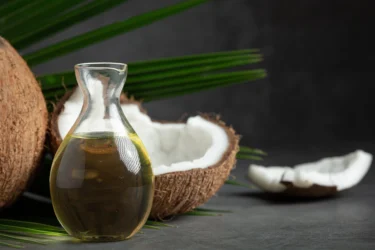
Coconut oil may help hair grow and remain healthy. It is also good for the re-growth of hair. It might be one of the best natural nutrients for hair. It may be used as one of the home remedies for thick eyebrows2. You can take a tiny amount of coconut oil and massage it in a circular pattern in the areas of your eyebrows. Doing this at night, keeping the oil overnight, and then washing it the next morning may be good for growing thicker eyebrows.
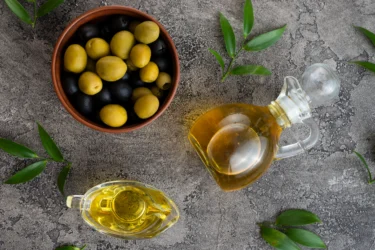
Studies on animals have shown that applying olive oil can stimulate hair growth. Therefore, it shows that olive oil is a potential hair growth agent3. Moreover, it is valuable for thick and bushy eyebrows. You can take a cotton swab and dip it in olive oil. Using this swab, massage your eyebrow region thoroughly. Leaving it overnight may also be beneficial. You might be able to see a visible difference in your eyebrows if you follow this routine diligently.
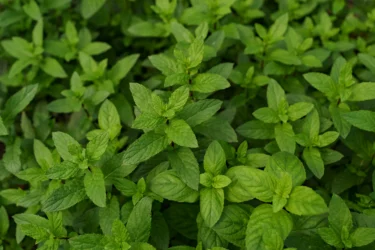
In animal studies, it was found that peppermint oil promotes the growth of hair by improving blood circulation to the hair follicles. It has the potential to be used as a hair loss prevention agent and also a therapeutic agent4. There is a need for further human studies to prove its efficiency, yet it is being used as a home remedy for hair growth. You may use it as a remedy to obtain thick eyebrows by taking a few drops of peppermint oil in a cotton swab and gently massaging it in a circular motion on your eyebrows. Leaving it overnight and washing it the next day may show visible beneficial effects.

It was seen in a study that aloe vera helps hair growth and has hair and follicle strengthening effects5. It is used for multiple purposes due to its therapeutic effects. It is valuable for getting thicker eyebrows. You can take a fresh aloe vera leaf and cut it open to obtain the gel. Then, mix this gel with a small amount of coconut oil and apply it to your eyebrows until it gets absorbed. You can leave it for some time and then wash it off. Doing it regularly might help you grow fuller eyebrows.
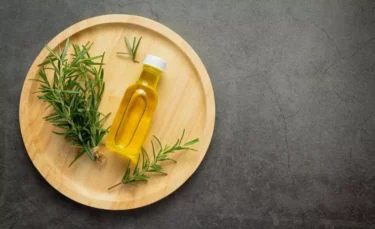
Rosemary essential oil is valuable for promoting hair growth. When applied externally, rosemary might stimulate the hair follicles, thus helping hair growth6. It is good for obtaining dense eyebrows. You can use this as one of the home remedies for thick eyebrows by mixing rosemary oil in coconut oil and applying it on your eyebrows at night, then washing it off the next day.
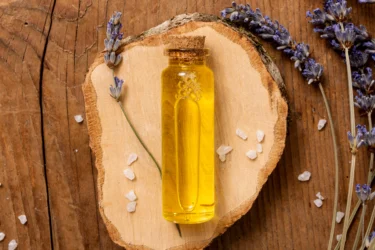
Animal studies showed that lavender oil promotes hair growth7. There is a need for more studies on humans to ensure its effects of lavender oil on humans. However, lavender oil is valuable as a home remedy for thick eyebrows. You may use lavender oil to help grow thicker and darker eyebrows by taking a few drops of lavender oil and massaging it gently onto your eyebrows, then leaving it overnight. Wash it the next morning. Using this remedy consistently might help your eyebrow hair grow.
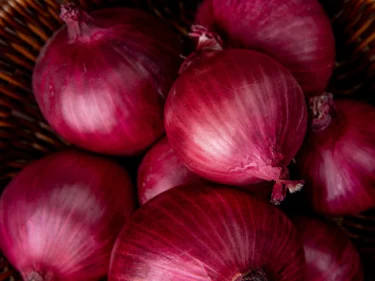
Onion promotes hair growth. It contains many minerals (mainly iron) which help hair grow by providing oxygen to the follicles6. As a remedy for obtaining thicker eyebrows, you can mix the juice of onion with honey and apply it over the eyebrow area. Using this method may prove to be beneficial for growing thick, dense and bushy eyebrows.
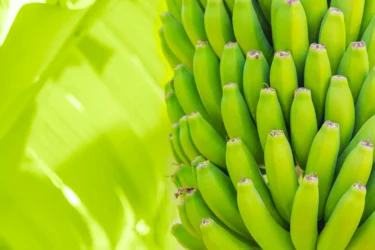
It was found in an animal study that unripe banana has hair growth-promoting activity8. Though there is a need for further human studies, it is good for growing thicker and fuller eyebrows. You can take an unripe banana, peel it, and mash the banana. Mix honey to this and apply it to your eyebrow area. Leave it on for a while, and then rinse it off with cool water. You might find this remedy useful for gaining thicker eyebrows by using it regularly.
Though there are studies that show the benefits of the given herbs and home remedies for getting thick eyebrows, these are insufficient. There is a need for large-scale human studies to establish the true extent of the benefits of these home remedies on human health. Thus, these should only be taken with caution and never as a substitute for medical treatment.
Also Read: Simple Home Remedies For Puffy Eyes
You should seek medical help if you notice the following symptoms as it could indicate a more severe problem:
You must not rely on home remedies alone for thick eyebrows and should consult a qualified doctor for any advice if the symptoms do not improve with home remedies.
Also Read: Effective Home Remedies for Silky Hair
Looking at many others, you might want thicker and bushier eyebrows. However, your eyebrows might not grow exactly as you want them to, leaving you wondering how to make your eyebrows thicker? You might notice a decreased thickness, thinning or loss of eyebrow hair. This might be due to a few conditions like alopecia areata, hormonal disturbances, etc., or you might have naturally thin eyebrows. Nonetheless, there are a few home remedies for thick eyebrows for you to try, such as onion, lavender oil, coconut oil, etc. However, thin eyebrows or loss of eyebrows can be a sign of a medical condition, so you should consult a dermatologist (hair and skin doctor) if you see scales on your skin, notice thinning of scalp hair and have eye problems.
Also Read: Effective Home Remedies For Red Eyes
You can try to make eyebrows thicker by trying out a few home remedies like coconut oil, olive oil, rosemary oil, onion, aloe vera, etc2,8. They are natural and might help you grow thick eyebrows.
No, there are no reports of thickening of eyebrows on the daily application of eyeliner. However, you can try a few home remedies for thick eyebrows like aloe vera, lavender oil, coconut oil, etc2,8.
Thinning of eyebrows is known as madarosis. It can occur in various diseases like hypothyroidism, Graham-little syndrome, Alopecia, blepharitis, etc1. You should consult a doctor to get it checked out if you notice any other symptoms along with it.
Studies have shown that an unripe banana is good for hair growth8. You can take a peeled unripe banana, make a paste of it, mix honey and apply it to your eyebrows. Leave it for some time, then rinse it. It may help you get fuller eyebrows.
There is no evidence of chalk being beneficial for making eyebrows thicker.
1. Kumar A, Karthikeyan K. Madarosis: A marker of many Maladies. Int J Trichology [Internet]. 2012;4(1):3–18. Available from: https://www.ncbi.nlm.nih.gov/pmc/articles/PMC3358936/
2. Sursinh Vala G, Vala GS, Kapadiya PK. Medicinal Benefits of Coconut Oil (A Review paper). Print) Int J Life Sci Res [Internet]. 2014;2:124–6. Available from: https://www.researchgate.net/publication/280574942
3. Tong T, Kim N, Park T. Topical application of oleuropein induces anagen hair growth in telogen mouse skin. PLoS One [Internet]. 2015;10(6):1–17. Available from: https://www.ncbi.nlm.nih.gov/pmc/articles/PMC4462586/
4. Oh JY, Park MA, Kim YC. Peppermint oil promotes hair growth without toxic signs. Toxicol Res [Internet]. 2014;30(4):297–304. Available from: https://www.ncbi.nlm.nih.gov/pmc/articles/PMC4289931/
5. Noreen S. A Close Look at Aloe Vera Barbadensis and It ‘ s Effect on Hair Health. 2020;(July). Available from: https://www.researchgate.net/publication/342588964_A_Close_Look_at_Aloe_Vera_Barbadensis_and_It%27s_Effect_on_Hair_Health
6. Patel S, Sharma V, Chauhan N, Thakur M, Dixit VK. Hair Growth: Focus on Herbal Therapeutic Agent. Curr Drug Discov Technol [Internet]. 2015 Aug 4 [cited 2022 Mar 29];12(1):21–42. Available from: https://pubmed.ncbi.nlm.nih.gov/26058803/
7. Lee BH, Lee JS, Kim YC. Hair Growth-Promoting Effects of Lavender Oil in C57BL/6 Mice. Toxicol Res [Internet]. 2016 [cited 2022 Mar 29];32(2):103. Available from: https://www.ncbi.nlm.nih.gov/pmc/articles/PMC4843973/
8. Savali A, Chitapurkar H, Bhinge S. Evaluation of hair growth promoting activity of Musa paradisiaca unripe fruit extract. J Nat Pharm [Internet]. 2011;2(3):120. Available from: https://www.researchgate.net/publication/272895983_Evaluation_of_hair_growth_promoting_activity_of_Musa_paradisiaca_unripe_fruit_extract
Disclaimer: The information provided here is for educational/awareness purposes only and is not intended to be a substitute for medical treatment by a healthcare professional and should not be relied upon to diagnose or treat any medical condition. The reader should consult a registered medical practitioner to determine the appropriateness of the information and before consuming any medication. PharmEasy does not provide any guarantee or warranty (express or implied) regarding the accuracy, adequacy, completeness, legality, reliability or usefulness of the information; and disclaims any liability arising thereof.
Links and product recommendations in the information provided here are advertisements of third-party products available on the website. PharmEasy does not make any representation on the accuracy or suitability of such products/services. Advertisements do not influence the editorial decisions or content. The information in this blog is subject to change without notice. The authors and administrators reserve the right to modify, add, or remove content without notification. It is your responsibility to review this disclaimer regularly for any changes.
Are you worried about oily and greasy-looking hair? Here are some remedies that can be used at home to keep your hair oil-free and clean. Oily scalp and hair are common problems many people face at some point in their lives. Oily and greasy-looking hair can make people self-conscious. The scalp has more number of sebaceous (oil) glands present, which can contribute to the oiliness of the scalp and hair. Sebaceous glands present on the scalp produce a large amount of sebum (oil), giving you an oily scalp and hair1. Keeping the scalp clean is essential for getting healthy hair. If the presence of excessive oil on the hair and scalp makes you uncomfortable or self-conscious, you can contact your healthcare provider and get the necessary treatment. Do inform them of any past allergies from medications or any treatment that you may have taken. You can also use these remedies to help you eliminate the excess oil on the hair and scalp.
Oil glands are the glands present beneath the skin surface. These glands are more abundant on the scalp and face. Oil glands are formed alongside a hair follicle. Oil glands produce oil, which imparts oiliness to the hair and scalp1.
Several factors govern the secretion of oil on the scalp. These factors are:
Don’t brush your hair too much. While you should brush your hair as needed, over-brushing can cause the hair follicles to produce more oil.
Dr Ashish Bajaj, M.B.B.S, M.D. in Clinical Pharmacology and Toxicology
Signs of oily scalp and hair are the oily and glossy appearance of hair. Other serious symptoms of oily hair and scalp are given below.
Here are some remedies that you can make use of to take care of excessive oiliness of the hair and scalp.

Tulsi leaf paste can be applied to the scalp to clean the hair roots and scalp. It may also soothe the scalp, improve blood circulation, and reduce irritation and dandruff. Irritated and damaged skin produces more oil. It is valuable for keeping the scalp healthy and promoting the growth of hair3. You can use fresh leaves of tulsi to make a paste. Apply this paste to hair and scalp evenly and wash it off with water after some time. Washing the hair and scalp with tulsi paste may help you get rid of oil from the hair and scalp.
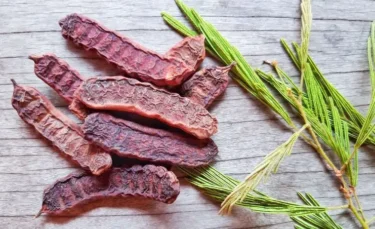
Shikakai is often used as a natural cleanser. It has been used traditionally to make herbal shampoos. Shikakai is used as an ingredient in herbal shampoos. It is valuable for hair3. You can use shikakai powder to wash hair and remove the oil from the hair and scalp. Shikakai powder can be used to wash the hair. You can also make shikakai powder to make a hair pack. Mix shikakai powder with some yoghurt to make a paste. Apply this paste as a hair pack. Use this hair pack once a week to get rid of excess oil from hair and scalp.

You can use neem leaves as a cleanser while washing the hair. Neem might help open the clogged pores on the scalp and promote hair growth. Neem is also effective against problems like dandruff, which can be caused by an oily scalp. You can use neem leaf powder to wash your hair3. Take some neem leaf powder and mix water to make a grainy paste. Apply this paste evenly to the scalp and hair. Let it be for some time. Wash it off using cold water to get clean hair and scalp.
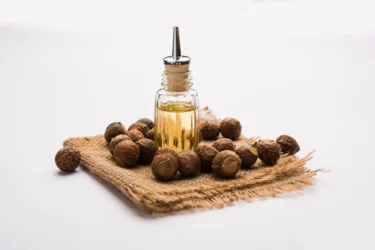
Reetha or soapnuts have good cleansing properties. It may also impart soothing effects on the scalp and make the scalp healthy3. Mix some reetha powder with water to make a smooth paste. Massage this paste on hair and scalp, leave for some time, and then wash it with water. It might help remove the dirt and oil from the scalp. Use this reetha paste as a hair mask whenever needed.
The antimicrobial qualities of apple cider vinegar make it effective against fungi and bacteria that cause scalp infections. Regular use of apple cider vinegar for hair wash can help you heal your scalp and become itch-free. Alpha-hydroxy acid, present in apple cider vinegar, is an exfoliant that cleans up scalp and reduces dandruff.
Dr. M.G. Kartheeka, MBBS, MD(Pediatrics)
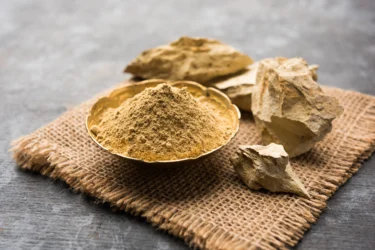
Fuller’s earth, known as Multani mitti in Hindi, is an excellent absorbent. It might quickly absorb oil and dirt from the scalp. To use fuller’s earth, you can make a paste by mixing fullers earth with water. This paste can be applied to hair and scalp to remove oil and dirt. The paste can be rinsed off using water afterwards4. You can use fuller’s earth as a hair mask whenever needed to get rid of excess oil from the hair and scalp.
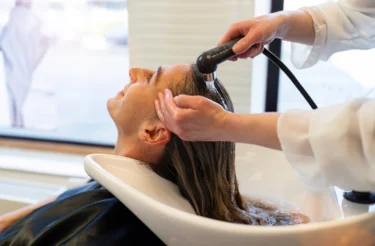
You can start washing your hair more often to remove all the accumulated oil and dirt. The frequency of hair wash depends upon how much oil is produced on your scalp. If your hair is too oily, you need to wash it at least once every day. For older people, frequent hair washing is not necessary as the scalp produces lesser oil5. You can make a herbal cleanser at home using herbs like amla, reetha, and shikakai and boiling them in water. Use the water after straining to wash the hair. You can also use Multani Mitti or fuller’s earth to wash your hair.
The scalp is where the oil gets accumulated and is transferred to the hair afterwards. Use more shampoo for cleaning the scalp. Using excessive shampoo on your entire hair might make it dull and course5. Choose a shampoo that suits your hair the best and does not cause damage by everyday use.
Also Read: Home Remedies For Hair Thinning
Avoid applying conditioner on the scalp or on the entire hair length. Using conditioners can make the hair and scalp greasier. If you need to use conditioner after shampoo, apply it to the hair tips and wash it properly afterwards5. You can use the conditioner of your choice.
Though there are studies that show the benefits of the given herbs and home remedies for dealing with oily scalp and hair, these are insufficient. There is a need for further studies to establish the true extent of the benefits of these herbs and home remedies on human health. Thus, these should be taken with caution and never as a substitute for medical treatment.
Over-washing of hair and scalp is ironically a major cause of scalp irritation and inflammation as it can dry out your scalp and trigger an increase in oil production.
Dr Ashish Bajaj, M.B.B.S, M.D. in Clinical Pharmacology and Toxicology
Oily hair and scalp are common problems people encounter at various points in their lives. It usually does not require medical intervention. However, some people may feel self-conscious because of excessive oil on their hair and scalp. You can seek medical help if:
You must not rely on home remedies alone for the management of oily scalp and hair. Neither should you self-medicate. You should consult a qualified doctor for any advice for oily scalp and hair if the symptoms don’t improve.
Also Read: Effective Home Remedies For Dry Scalp
The skin of the scalp is rich in oil glands, which are present along with the hair follicles. Sebum production on the scalp makes it oily. This oil is carried to the entire hair length. You may quickly get rid of oil from your hair and scalp by washing it frequently and taking proper care of your hair. There are many herbal ingredients that you can use to keep the hair and scalp free of oil. Herbs like shikakai, reetha, neem, and tulsi may be used to wash the hair and scalp to make it healthy and shiny.
You contact your skin and hair doctor (dermatologist) if the oiliness makes you uncomfortable and the home remedies don’t work out. If you are also affected by other hair problems like dandruff, itchiness or other medicinal allergies, don’t hesitate to contact your healthcare provider.
Also Read: Home Remedies For Itchy Scalp By Dr. Siddharth Gupta
You can get rid of the oily scalp by washing your hair frequently. If your scalp produces excessive oil, you need to wash your hair at least once a day to get rid of that oil5. You can use shampoo as well as natural herbs like tulsi, reetha and shikakai to wash your hair. These herbal remedies might help you get rid of oil and dirt from hair and scalp and also make the hair healthy3.
Herbal remedies that you may use to help get rid of oil from your hair and scalp are amla (Indian gooseberry), tulsi (holy basil), reetha (soapnut), and neem. These ingredients can be used to wash the hair and remove oil from the scalp and hair. You can use Multani mitti (Fuller’s earth) to absorb the excess oil and dirt from the scalp and leave the hair fresh and clean3,4.
Yes, you can use Multani mitti to help remove oil and grease from the scalp. Mix Multani mitti with water and make a smooth paste. This paste can be applied as a hair mask. Apply it evenly on hair and scalp, leave for some time, and then wash it thoroughly with water. Multani mitti might absorb all the oil from the scalp3,4.
Yes, if you have an oily scalp, it can also lead to dandruff. The scalp becomes oily due to excessive sebum production. The presence of sebum on the scalp creates an ideal environment for the growth of Malassezia (a fungus), which is responsible for causing dandruff2.
Reetha is a natural cleanser that may be used to keep the hair clean3. You can use reetha powder to make a hair mask. Mix reetha powder with water and make a paste. Apply it evenly to the scalp and hair. Leave the paste for some time, then wash it off with water.
1. Sakuma TH, Maibach HI. Oily skin: an overview. Skin Pharmacol Physiol [Internet]. 2012 [cited 2022 May 17];25(5):227–35. Available from: https://pubmed.ncbi.nlm.nih.gov/22722766/
2. Lourith N, Kanlayavattanakul M, Nualsri C. Development and clinical evaluation of green tea hair tonic for greasy scalp treatment. Journal of Cosmetic Science [Internet]. 2016;67:161–6. Available from: https://www.researchgate.net/publication/308149951
3. Pal RS, Saraswat N, Wal P, Wal A, Pal Y. Preparation & Assessment of Poly-Herbal Anti-Dandruff Formulation. The Open Dermatology Journal. 2020 Jul 14;14(1):22–7. Available from: https://opendermatologyjournal.com/VOLUME/14/PAGE/22/FULLTEXT/
4. Madnani N, Khan K. Hair cosmetics. In: Indian Journal of Dermatology, Venereology and Leprology. 2013. p. 654–67. Available from: https://ijdvl.com/hair-cosmetics/
5. American Academy of Dermatology Association. Tips for healthy hair [Internet]. [cited 2022 Jun 8]. Available from: https://www.aad.org/public/everyday-care/hair-scalp-care/hair/healthy-hair-tips
Disclaimer: The information provided here is for educational/awareness purposes only and is not intended to be a substitute for medical treatment by a healthcare professional and should not be relied upon to diagnose or treat any medical condition. The reader should consult a registered medical practitioner to determine the appropriateness of the information and before consuming any medication. PharmEasy does not provide any guarantee or warranty (express or implied) regarding the accuracy, adequacy, completeness, legality, reliability or usefulness of the information; and disclaims any liability arising thereof.
Links and product recommendations in the information provided here are advertisements of third-party products available on the website. PharmEasy does not make any representation on the accuracy or suitability of such products/services. Advertisements do not influence the editorial decisions or content. The information in this blog is subject to change without notice. The authors and administrators reserve the right to modify, add, or remove content without notification. It is your responsibility to review this disclaimer regularly for any changes.
Next Page »« Previous Page